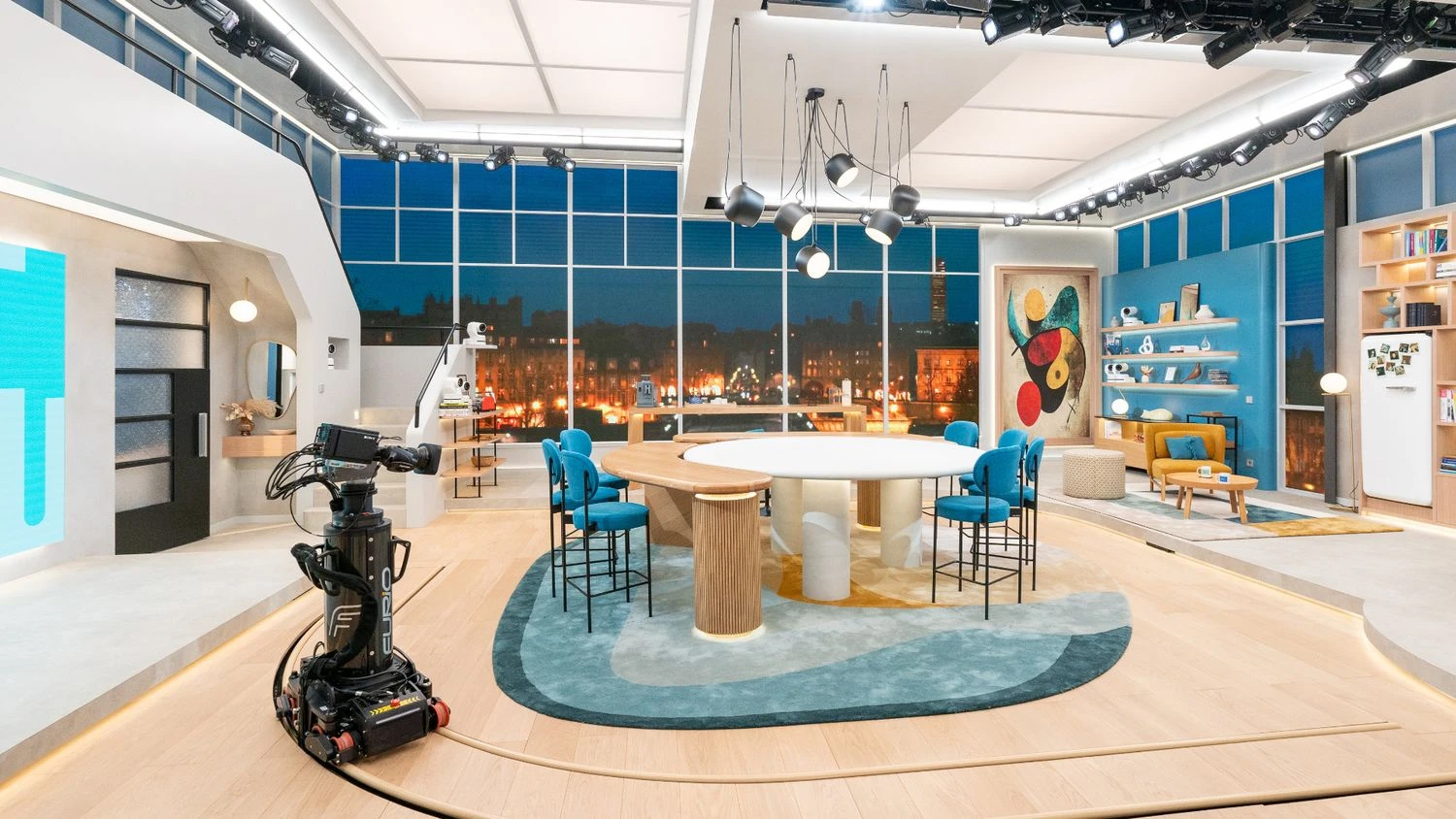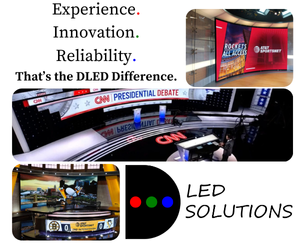From payload to power: Tackling robotic camera integration in broadcast studios

Subscribe to NCS for the latest news, project case studies and product announcements in broadcast technology, creative design and engineering delivered to your inbox.
The broadcast industry’s shift towards automation has made robotic camera systems a key component of new studio builds and refurbishments.
While these advanced systems offer control and creativity, their integration presents technical challenges. Broadcasters must now balance robotics’ potential with the realities of implementation in studio production environments.
Industry experts from robotic camera system vendors highlight the complexities of implementing these advanced systems and offer insights on best practices.
Payload management
One primary challenge in implementing robotic camera systems is managing the payload. Karen Walker, VP of camera motion systems at Ross Video, explained, “The main challenge is managing the payload on the robotic system, including the camera, lens, prompter and talent monitor.”
Walker notes that evolving camera technology adds to this complexity. “Camera bodies are becoming smaller, with many customers seeking a shallow depth of field using traditional cine cameras in studio environments. Balancing these cameras with ENG or cine-style lenses can be difficult,” she noted.
This balance is key for maintaining smooth movements and precise control, especially when capturing dynamic shots or integrating with virtual sets and augmented reality workflows.
Safety protocols and training
Safety is a critical concern when implementing robotic camera systems in broadcast environments, as the operator is often not in the same room as the camera systems.
Paddy Taylor, head of broadcast solutions at MRMC, emphasized the importance of comprehensive safety measures.
“Safety is crucial. Ensure that safety protocols are effectively documented and enforce training with all those who work within the vicinity of a robotic system and budget for appropriate safety hardware,” Taylor advised.
This focus on safety extends beyond the immediate operators to include all personnel who may interact with or work near the robotic systems. Implementing robust safety protocols helps mitigate risks associated with moving mechanical components in a busy studio environment.
The introduction of robotic camera systems necessitates new skill sets for operators. Michael Cuomo, VP at Telemetrics, noted the role shift: “Camera robotics enables production teams to take personnel that are performing more mundane tasks and move them into more creative roles.”
However, Taylor pointed out a current skills gap in the industry. “There is a lack of knowledge and experience in this space and it’s vital that the camera operators of the future are given access to training to gain the skills they need,” he said.
This transition requires broadcasters to invest in training programs to ensure operators can effectively control and maximize the potential of robotic systems.
Integration with existing systems
Implementing robotic camera systems often involves integrating them with existing broadcast infrastructure. James Eddershaw, managing director of Shotoku, highlighted the importance of flexibility in this integration.
“Many productions will use mostly robotic cameras, but will maintain the ability to use a manual camera either simultaneously, or during special productions. A decision to make use of robotics should not be a one-time thing. Good robotics will allow complete manual override with no impact on the operation in a manual mode,” Eddershaw explained.
This flexibility allows broadcasters to gradually transition to robotic systems while maintaining the option for manual operation when needed.
Implementing robotic camera systems in existing broadcast studios presents challenges beyond the core technical and operational issues. Studio design must evolve to accommodate these systems, with considerations for diverse flooring materials, multi-level layouts,and the integration of rail or ceiling-mounted cameras. This evolution requires a delicate balance between creating visually appealing sets and ensuring functional spaces for robotic operations.
Overall studio size also continues to shrink, requiring more compact setups for cameras and robotics.
Power and reliability concerns
The reliance on robotic systems introduces new considerations for power management and system reliability. Walker addresses a common concern: “A common concern is power outages; manual control provides some movement in such cases, but camera power and prompters remain a concern.”
To mitigate these risks, broadcasters must implement robust power backup systems and contingency plans to ensure continuity of operations during technical difficulties.
As robotic camera technology continues to evolve, broadcasters must prepare for future developments. Neil Gardner, senior product manager for robotics at Vinten, predicted increased integration with emerging technologies.
“AI and machine learning will enable robotics cameras and automation to move to the next level. Achieving a natural look at camera movement and framing is key, and that comes with experience,” Gardner said.
This evolution may introduce new technical challenges, requiring broadcasters to update their systems and training protocols continually.
By proactively addressing these challenges, broadcasters can maximize the benefits of robotic camera systems while minimizing disruptions to their operations. With careful planning, comprehensive training and a focus on flexibility and safety, these systems can enhance production capabilities and efficiency in broadcast studios.
Subscribe to NCS for the latest news, project case studies and product announcements in broadcast technology, creative design and engineering delivered to your inbox.







tags
James Eddershaw, Karen Walker, Michael Cuomo, MRMC, Paddy Taylor, Ross Video, Shotoku, Shotoku Broadcast Systems, Telemetrics
categories
Broadcast Equipment, Camera Control & Camera Robotics, Featured, Studio Technology